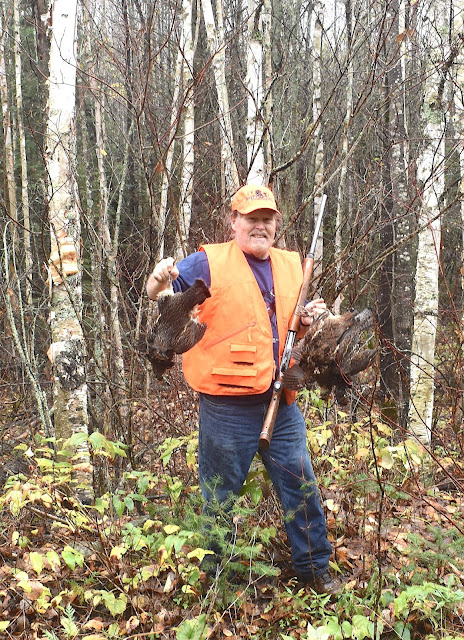 |
| Grandma and Grandpa McNew's family, including me, in the '50s |
I am going to give some money to needy families to buy presents for kids, not because I have to, but because I want to. It won’t be much because I don’t have a lot to give. It will be a greater reward for me than it will be for those few underprivileged kids. Thank goodness there aren’t so many poor kids today as there was when I was a boy!
If I was only rich, poor kids all over the Ozarks would get dolls and guns and holsters to play with! But the average kids today get so much for Christmas that they really don't have the time to give much of it any attention except those little boxes they work with their thumbs. It's nothing like it was when I was a boy, when I use to have to walk 3 miles to school in the snow because the battery was dead on the old school bus and the driver had drunk too much eggnog the night before!!!
But back then there was common sense and simplicity left in this world. For instance, I just lived for a new gun and holster and a cowboy hat at Christmas when I was five or six. Nowadays, if a little kid has a toy gun, somebody is scared to death he'll point it at someone and go "bang-bang", like I and thousands of other little boys born during the days of Gene Autry and Roy Rogers did.
Here we are in an age when no kid can have a toy gun and look what's happening. Maybe somebody is overlooking something. It might not be toy guns that created the monsters. And there will be more of them every year, because there are fewer manger scenes allowed in schools today and every kid has a black box and access to games where you kill people.
My cousins and I built forts and took our toy guns out and played cowboys and outlaws all the time and none of us ever held up a convenience store or a bank when we grew up. The closest thing we did to criminalism was when me and the McNew boys went into the Brown Hill country school before the evening church services and drank all the chocolate milk in the new refrigerator!
By the time we were 11 or 12, we all carried Barlowe pocketknives we had got for Christmas, to school and back home each day, and yes, we all cut our fingers a time or two, but nothing that left a scar. If Grandpa gave us a Christmas present, it was maybe something he made. When I was the age of my grandson, I was tickled to get two good Christmas presents under the tree, and everything I got was used hard in my effort to catch bad guys and herd cattle like they did on the Saturday afternoon movies at the theatre in town.
There wasn't much quantity to life for a kid in the Ozarks in the ‘50's and 60’s, but brother, did we have some quality. On Christmas day at Grandpa's house, all of us boy cousins (14 total) got together and had one heck of a time without toys because our folks wouldn't let us bring anything. They had paid too much money for those gun-and -holster sets and cowboy hats to let one of those rowdy cousins get their hands on them.
We didn't need toys anyway when we got together on Christmas, we'd go down to the pond and throw dried persimmons at each other, then walnuts, then rocks. Finally we'd have the doggonedest dinner you ever saw in that little 4-room farm house and my Dad and Uncles would sit around and talk about somebody's pick-up motor or the best coon dog they remembered or something of that sort. By late afternoon, when Aunt Margie and Aunt Erma and Aunt Ruth and Aunt Mildred and Mom and Grandma all got the kitchen in order, we'd all come in and get our presents from beneath the tree from Grandma, which almost always was a pair of socks. Then we'd watch our uncles open their presents, almost always a pair of socks or some brown cloth gloves.
Of course back in those days, there were lots of sock colors and designs so it wasn't like everything was the same. There was some excitement in comparing whose socks looked the most different. Then Grandma and Grandpa would open their presents and they'd get all sorts of good things. Lord knows there was so much they needed. I remember thinking that the people who did the best at Christmas were grandparents, because their kids all had jobs and could buy good presents for them, and they had lots of kids.
I am thinking there sure enough is a heaven somewhere and an old farmhouse where Christmas dinners are held with my uncles and aunt’s and grandparents who died years ago, and those cousins who have joined them in a grand reunion and a celebration of the birthday of Jesus. Wouldn’t it be something if Christ himself could come on occasion to talk about his boyhood?
I can’t envision heaven. I don’t even try. But that scenario would be wonderful, without the technology that is destroying this world now. I miss my cousins. It wouldn’t be so bad to have a big dinner together without the presence of or a thought to any darned computers. I know there can’t be violence in heaven but it would be nice to have a big pond with plenty of persimmons just for the good memories. And maybe some beautifully colored socks in packages beneath a decorated Ozark cedar tree.

























